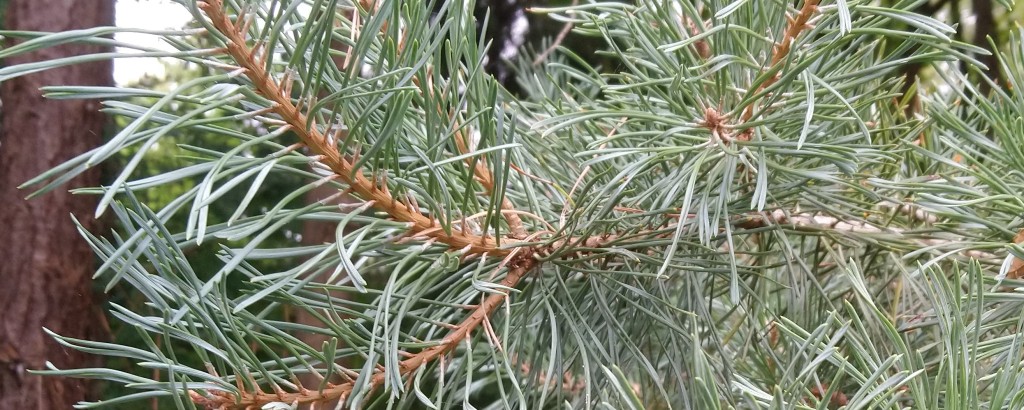
[269] Pinus sylvestris, Scots Pine
Introduction
Pinus sylvestris, Scots Pine, is a coniferous tree still found wild in parts of Scotland and cultivated elsewhere in Britain in parks and gardens.
In the US, Pinus sylvestris is known as the Scotch Pine and it also has the names European Red Pine and Baltic Pine
Taxonomy
Kingdom – Plants
Division – Vascular Plants
Class – Pinopsida (Conifers)
Order – Pinales
Family – Pinaceae
Subfamily – Pinoideae (Just Pines)
Genus – Pinus (Pines)
Subgenus – Pinus
Section – Pinus
Subsection – Pinus
Scientific Name – Pinus sylvestris
Name
This is not the place to go into the peculiarities of British English (and Scottish English) that leave us with three words to describe things relating to Scotland – Scots, Scotch and Scottish.
The common name pine comes from the Latin pinus from older roots meaning sap, juice or resin. Until the Nineteenth Century Pine trees used to be called Firs. Sylvestris means to do with forests, woods or trees!
Description
Like most conifers, the Scots Pine is an evergreen tree with needle shaped leaves. It is a tall, erect tree, growing to about thirty metres in height.
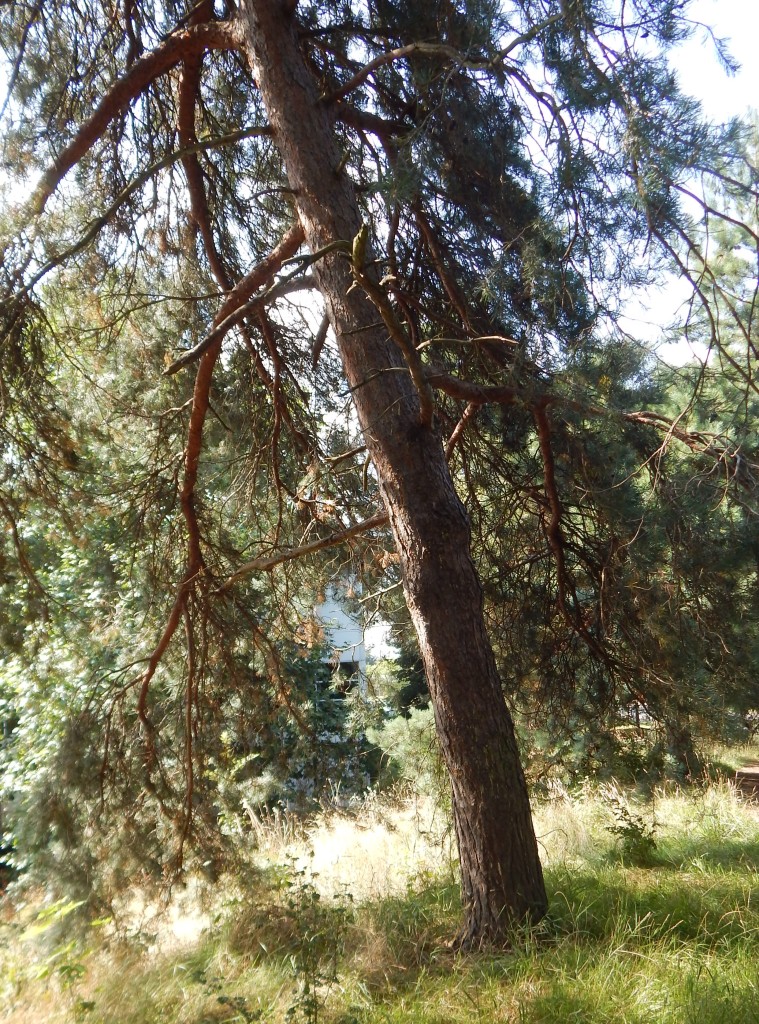
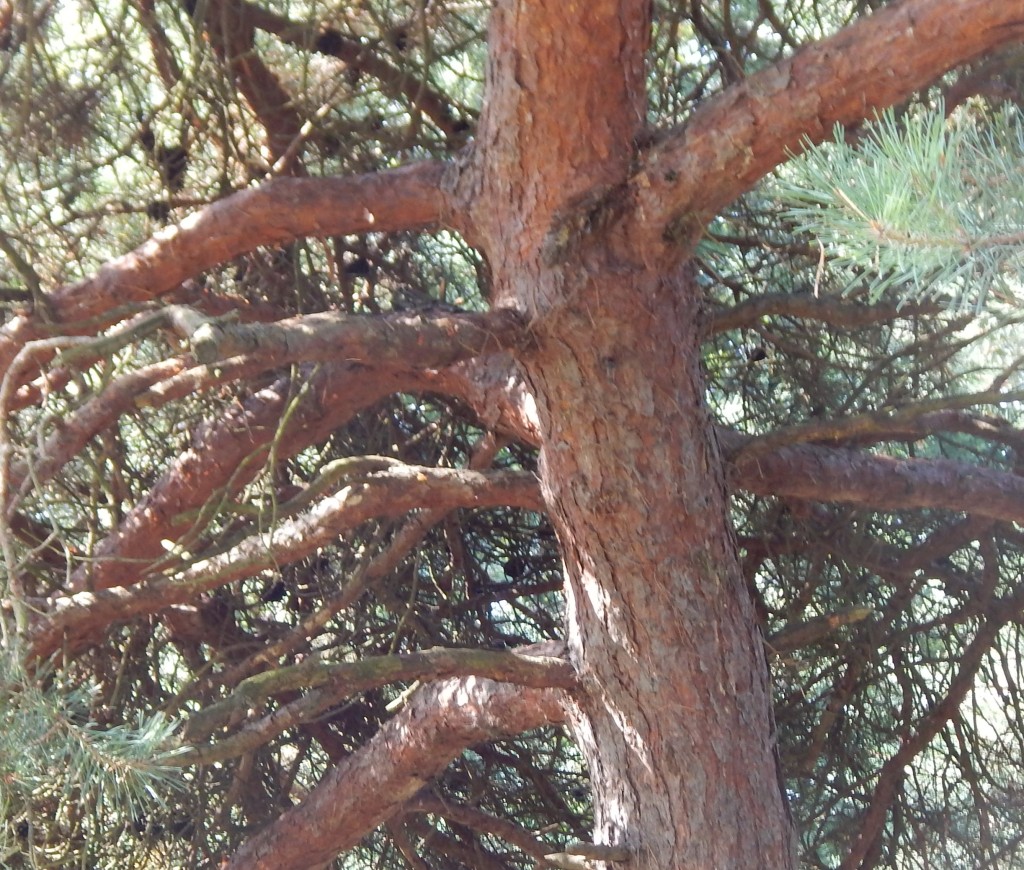

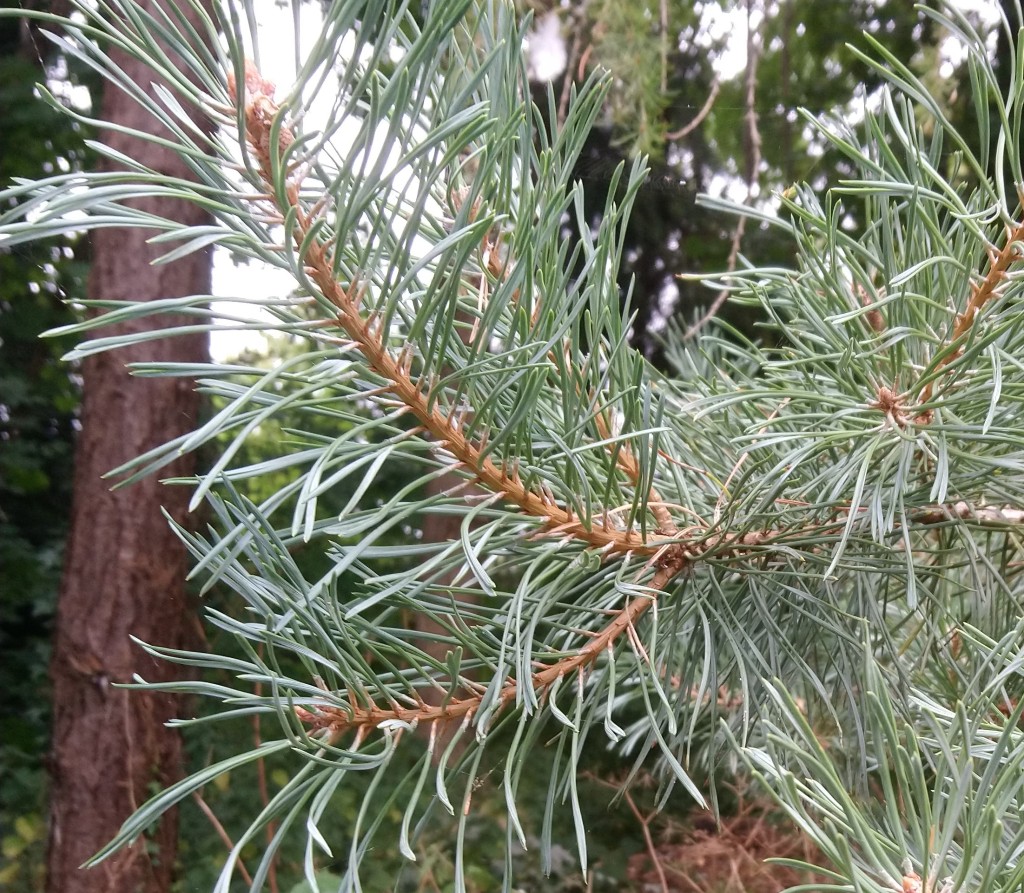
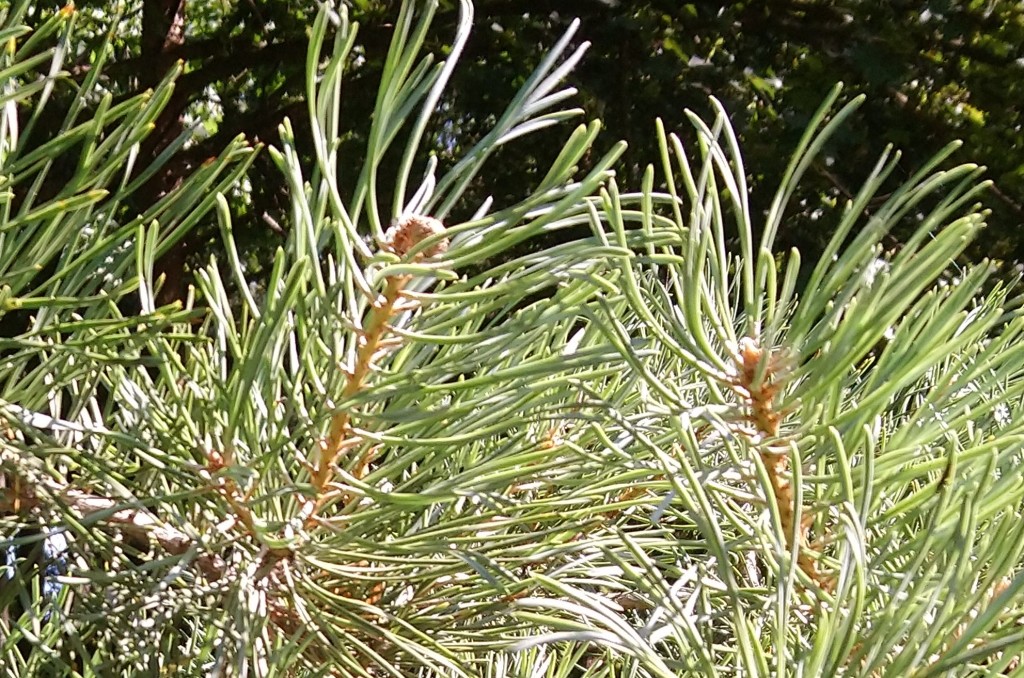

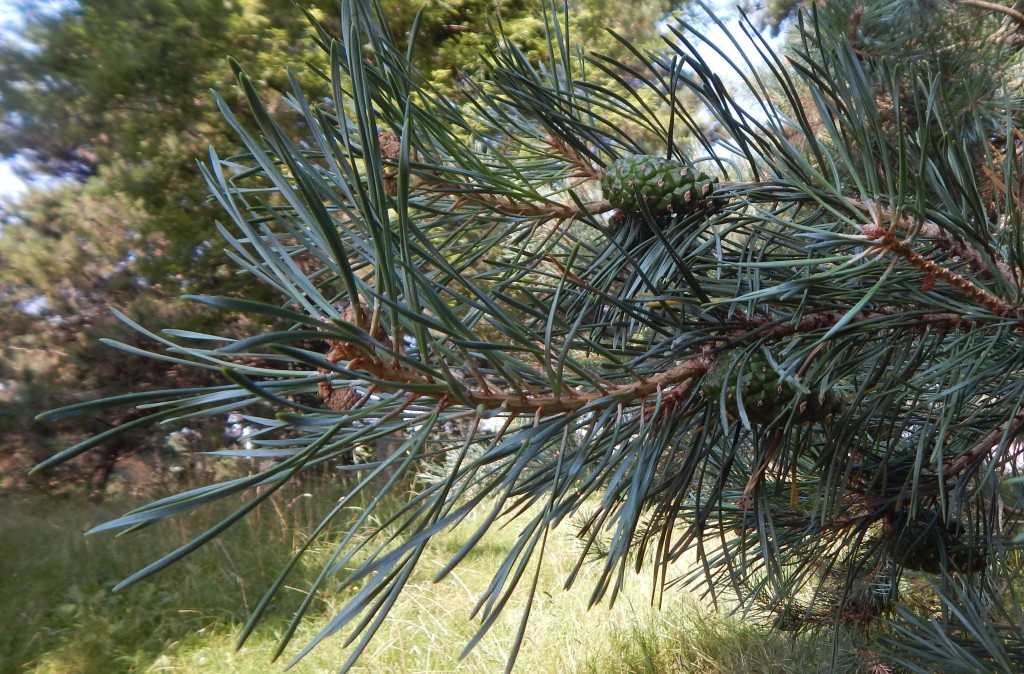
Trees bear both male and female cones. Male cones are small and are present just long enough to shed their pollen. Female cones take two to three years to develop.

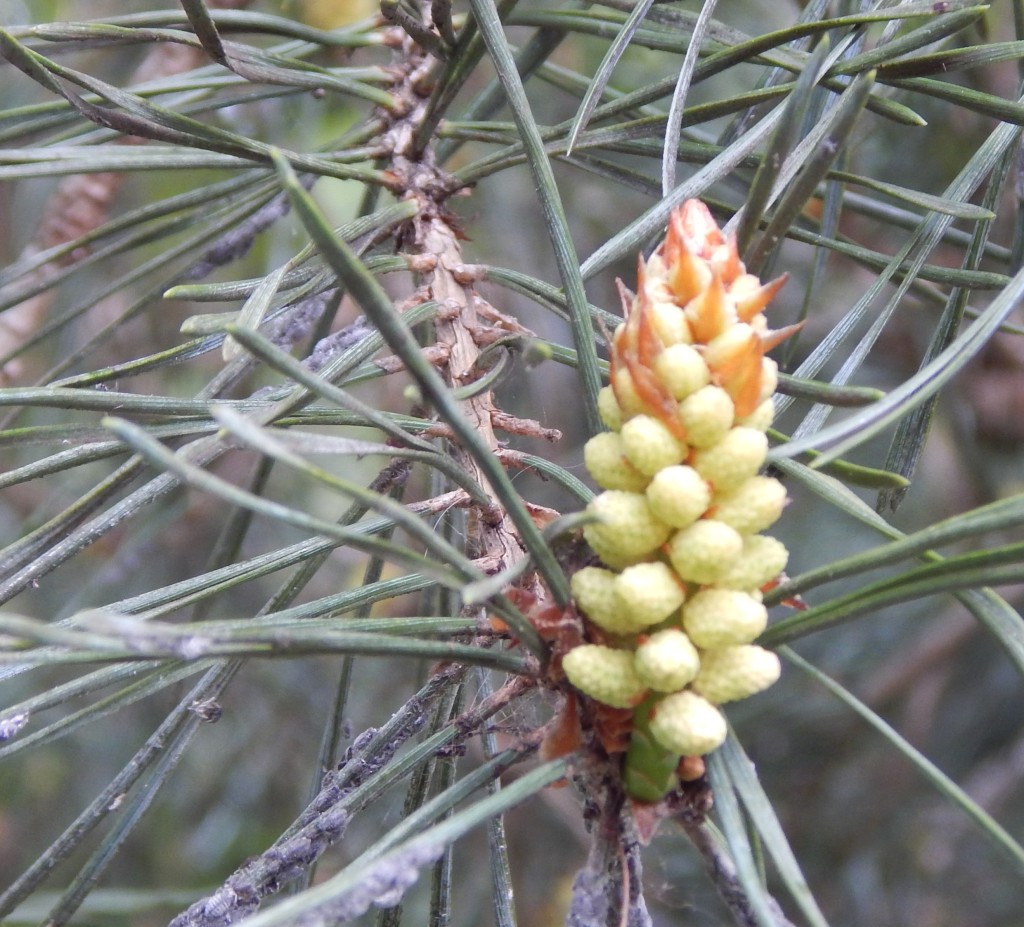
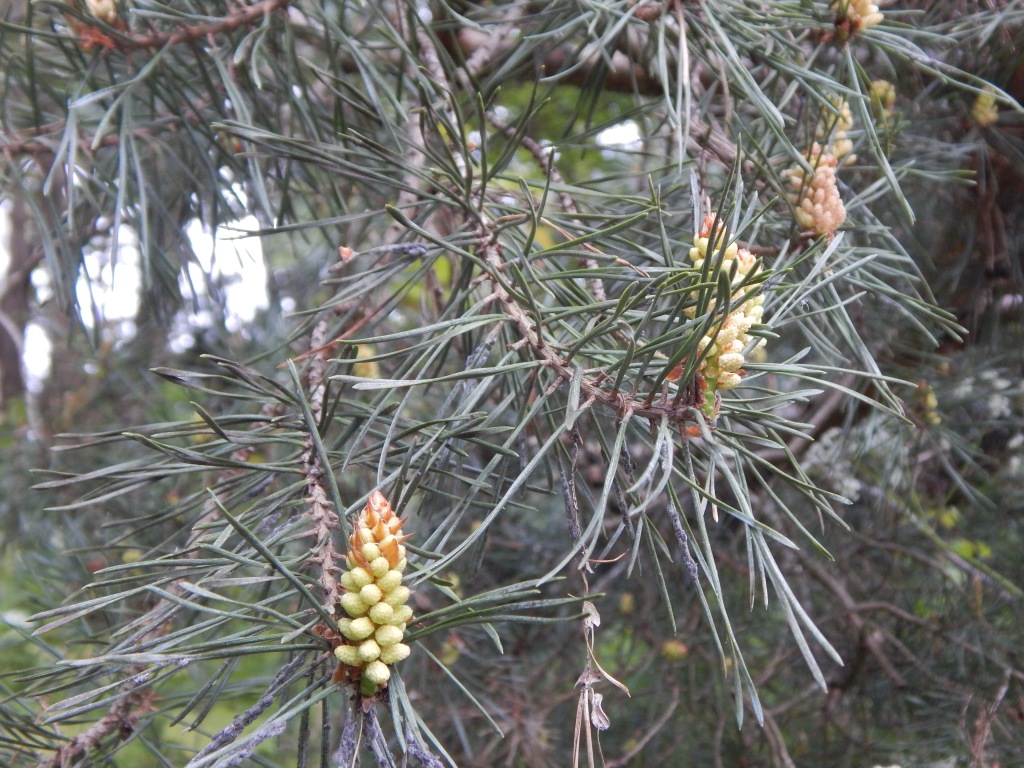
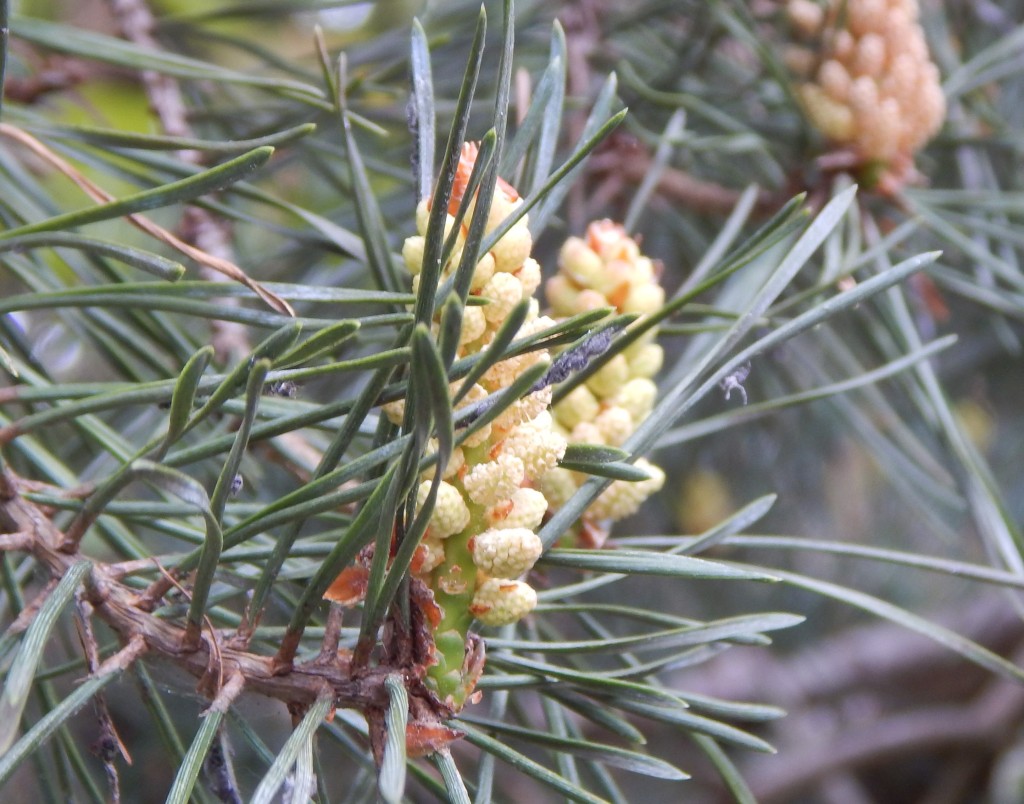
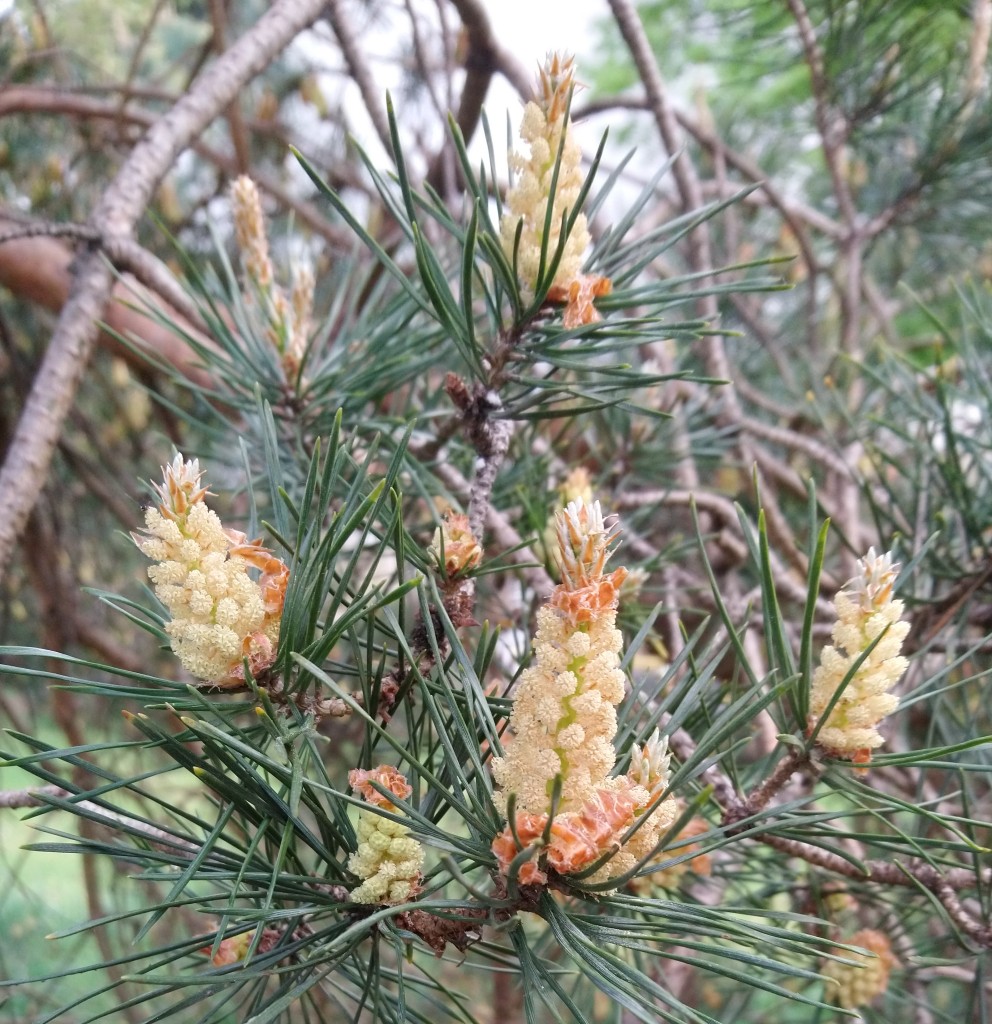
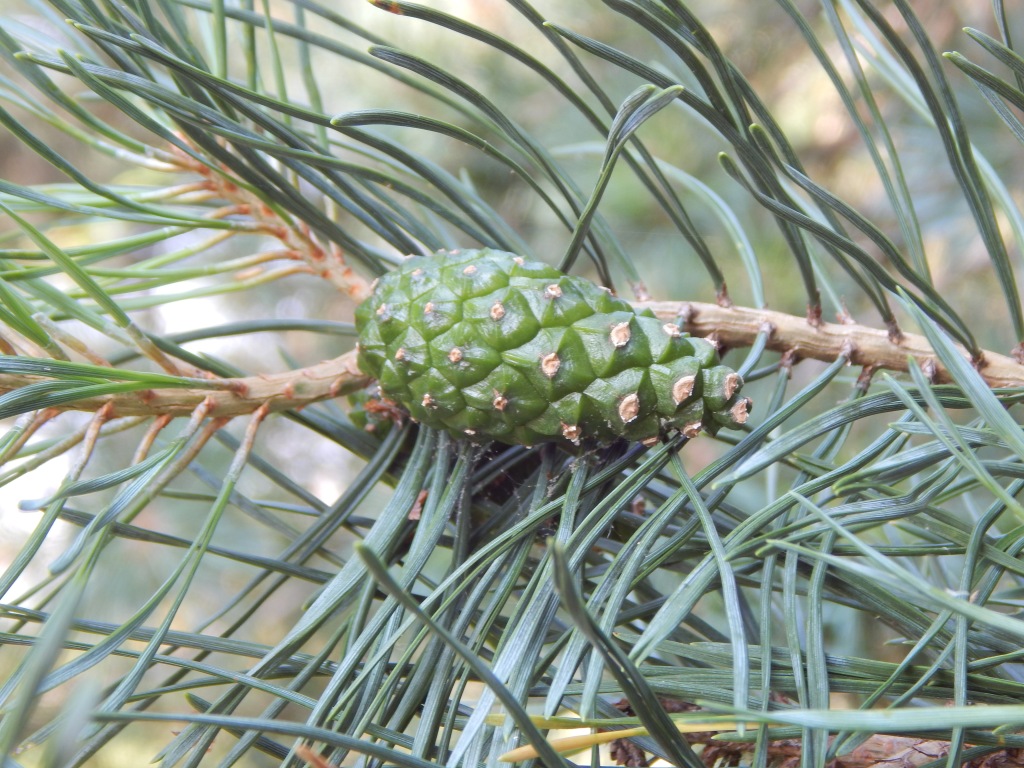
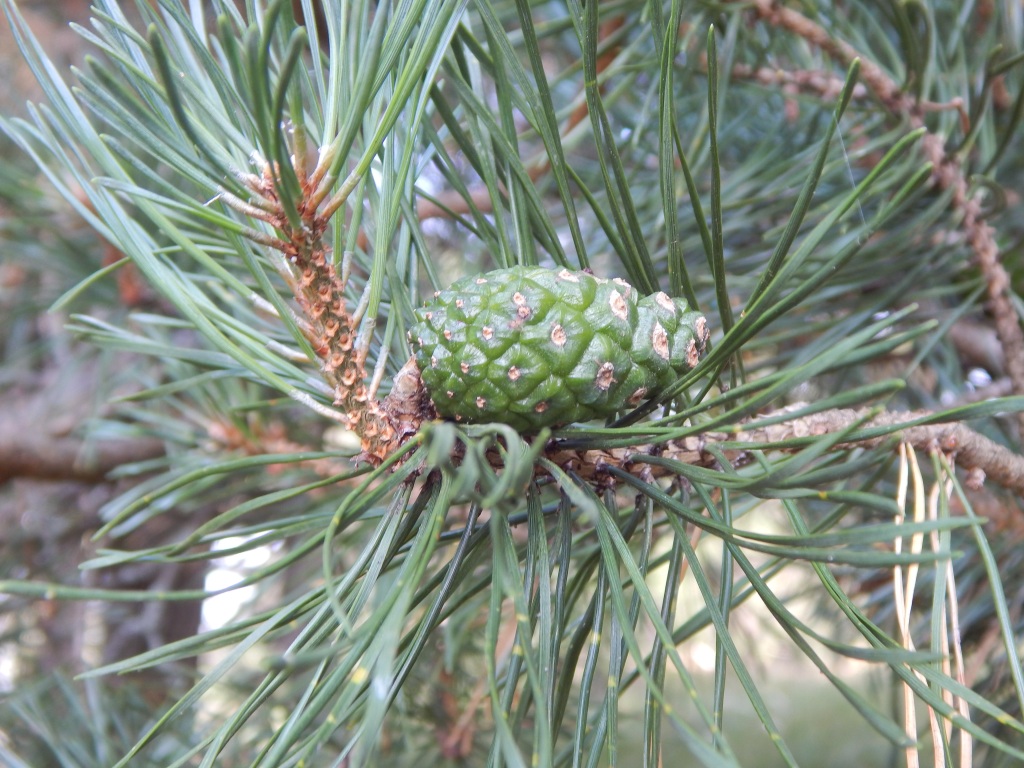

Habitat and use
Pinus sylvestris is native to Northern parts of Eurasia. It spread across Britain about 20 000 years ago when the ice sheets melted and now has extensive areas in parts of Scotland. It survives well in soils that are too poor for other tree species.
It is available as a cultivated tree and several cultivars are available.
Several species of Pine trees are used extensively for timber. Pine trees are also the source of turpentine. Some Pine trees are now sold as alternative form of Christmas Tree to the more familiar [266] Norway Spruce.
Other Notes
That’s another conifer done. Because they don’t have exciting flowers, they are almost the same as each other at first glance. If you walk past a coniferous tree, you probably won’t know if it’s a Pine, a Spruce, a Fir, a Larch, a Cedar, a Cypress or a Juniper.
